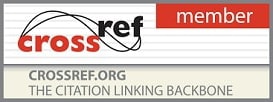
- Printed Journal
- Indexed Journal
- Refereed Journal
- Peer Reviewed Journal
Impact Factor: Impact Factor(RJIF): 5.3
International Journal of Home Science
2024, VOL. 10 ISSUE 1, PART D
Sustainable management of textile waste through value addition
Author(s): Saroj Yadav, Neelam M Rose, Neelam Saini and Manju Dahiya
Abstract:
The textile waste is a burning environmental issue which can’t be ignored. It’s the time to realize the impact of textile waste which wreaks havoc in so many ways on our planet from landfill overload to water pollution, greenhouse gas emissions, chemical usage and resource depletion. To overcome this problem, consumer need to redefine their approach to fashion and embrace sustainable alternatives by limiting the consumption of textiles and adopting recycling and repurposing. The present research work was undertaken to utilize the pre and post-consumer textile waste for developing value added products. On the basis of preferences of consumers, a total of twelve products under two categories i.e. apparel and utility articles/ accessories were selected for the development of innovative products using the collected pre and post-consumer textile waste. Six top preferred products in apparel category were Lehanga choli (WMS 4.80), evening gown (WMS 4.70), skirt-top (WMS 4.70), ladies suit (WMS 4.70), tunic (WMS 4.60) and frock (WMS 4.30). The six top preferred utility articles/ accessories selected for product development were wall pocket (WMS 4.70), mobile kit (WMS 4.70), shopping bag (WMS 4.60), foot mat (WMS 4.50), chapati holder (WMS 4.30) and hand bag (WMS 4.30). The selected products were developed using the collected pre and post-consumer textile waste. An exhibition of developed products was organized, the consumers were asked to give a preferred price for buying the particular product and their market potential was assed. For apparel articles the profit quoted by the consumers ranged from 20 to 100 per cent and the consumers opined that the developed utility articles/ accessories could be sold with a profit margin of 10 to 60 per cent. The results highlighted that the products developed from textile waste have good market potential and the pre and post-consumer waste can be effectively utilized for product development. The women having knowledge of stitching can take it up as an income generating activity.
The textile waste is a burning environmental issue which can’t be ignored. It’s the time to realize the impact of textile waste which wreaks havoc in so many ways on our planet from landfill overload to water pollution, greenhouse gas emissions, chemical usage and resource depletion. To overcome this problem, consumer need to redefine their approach to fashion and embrace sustainable alternatives by limiting the consumption of textiles and adopting recycling and repurposing. The present research work was undertaken to utilize the pre and post-consumer textile waste for developing value added products. On the basis of preferences of consumers, a total of twelve products under two categories i.e. apparel and utility articles/ accessories were selected for the development of innovative products using the collected pre and post-consumer textile waste. Six top preferred products in apparel category were Lehanga choli (WMS 4.80), evening gown (WMS 4.70), skirt-top (WMS 4.70), ladies suit (WMS 4.70), tunic (WMS 4.60) and frock (WMS 4.30). The six top preferred utility articles/ accessories selected for product development were wall pocket (WMS 4.70), mobile kit (WMS 4.70), shopping bag (WMS 4.60), foot mat (WMS 4.50), chapati holder (WMS 4.30) and hand bag (WMS 4.30). The selected products were developed using the collected pre and post-consumer textile waste. An exhibition of developed products was organized, the consumers were asked to give a preferred price for buying the particular product and their market potential was assed. For apparel articles the profit quoted by the consumers ranged from 20 to 100 per cent and the consumers opined that the developed utility articles/ accessories could be sold with a profit margin of 10 to 60 per cent. The results highlighted that the products developed from textile waste have good market potential and the pre and post-consumer waste can be effectively utilized for product development. The women having knowledge of stitching can take it up as an income generating activity.
Pages: 294-298 | 119 Views 92 Downloads

How to cite this article:
Saroj Yadav, Neelam M Rose, Neelam Saini, Manju Dahiya. Sustainable management of textile waste through value addition. Int J Home Sci 2024;10(1):294-298.





